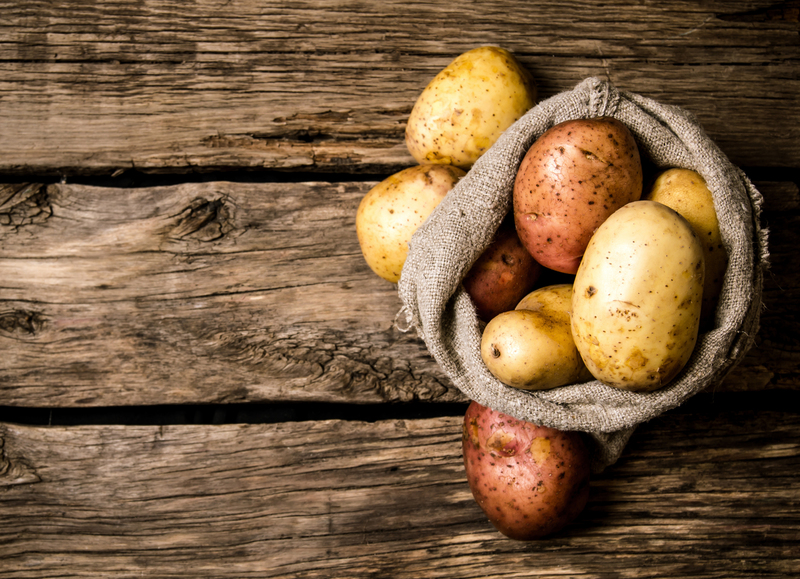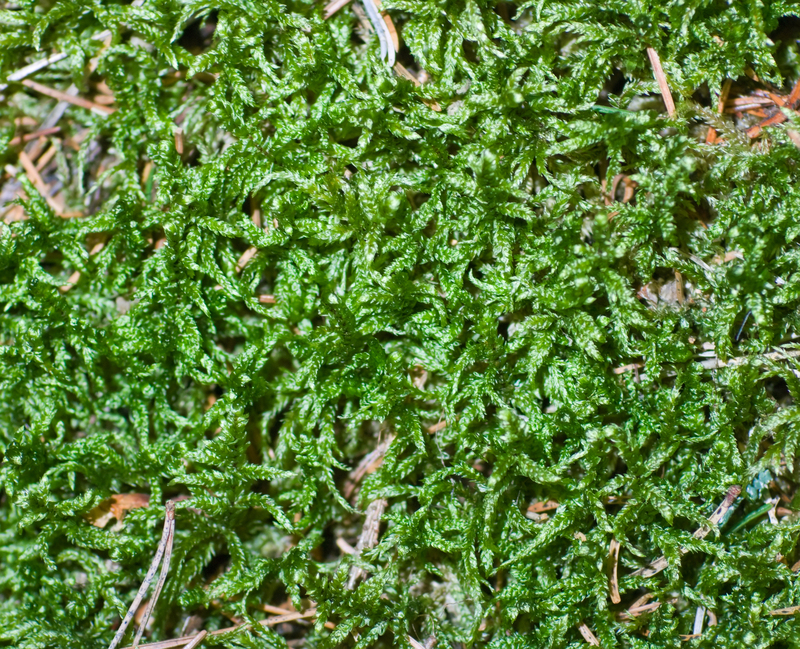Elevate Your Kitchen with Fresh Herbs Grown at Home
Posted on 14/06/2025
Elevate Your Kitchen with Fresh Herbs Grown at Home
Imagine stepping into your kitchen and plucking vibrant aromatic leaves straight from your own miniature indoor herb garden. The burst of freshness, nutrition, and flavor you gain with homegrown herbs is unmatched by anything purchased at the supermarket. Learning how to grow herbs at home is not just a step towards sustainable living; it's the secret ingredient that can transform your cooking and enliven your kitchen space.
Why Fresh Herbs from Home Are a Game-Changer
Growing fresh herbs at home revolutionizes not only the way you cook but also how you experience food. Herbs freshly harvested from your windowsill or balcony provide superior taste, nutritional value, and alluring aroma compared to their store-bought, often wilted counterparts.
Key benefits include:
- Maximum Freshness: Homegrown herbs are picked at their peak, preserving essential oils that give them robust flavor and natural fragrance.
- Cost Savings: Buying fresh-cut herbs from grocery stores can become expensive. By cultivating your own, you can cut back on recurring expenses.
- Continuous Supply: Enjoy a steady reserve of popular culinary herbs throughout the year with minimal investment and maintenance.
- Improved Health: Fresh herbs such as basil, mint, parsley, and rosemary are rich in antioxidants, vitamins, and minerals that support overall wellness.
- Eco-Friendly: Reduce your carbon footprint by eliminating plastic packaging and minimizing transportation emissions.

Getting Started: Essential Herbs to Grow at Home
Whether you are a budding cook or a kitchen aficionado, starting with key herbs can immediately elevate your cooking experience. Here are the most popular and easiest herbs to grow at home:
1. Basil
A must-have for any home chef, basil is the heart of dishes like pesto, Caprese salads, and Thai curries. Its bold, sweet-spicy leaves thrive with lots of light and regular pinching.
2. Mint
Mint is a vigorous herb that adapts well indoors and outdoors, just remember to give it space or a separate pot to avoid overgrowth. Use it in teas, desserts, salads, and cocktails.
3. Parsley
Flat-leaf or curly, parsley is versatile and nutrient-dense. Add fresh parsley to marinades, sauces, or as a finishing touch on dishes for a flavor boost and vibrant color.
4. Chives
Easy to grow in any kitchen, chives lend a delicate onion-garlic flavor to eggs, soups, potatoes, and more.
5. Rosemary
With its woody stems and pine-like aroma, rosemary enhances roasted vegetables, meats, and Mediterranean cuisine. It's remarkably hardy and requires little maintenance.
6. Thyme
Thyme's tiny, aromatic leaves flourish in small containers and pair beautifully with fish, poultry, vegetables, and stews.
Other home-growing favorites include oregano, cilantro, tarragon, sage, and dill. Start with a few favorites and expand your collection as you master their care.
How to Grow Herbs at Home: Step-by-Step Guide
Want to transform your kitchen into a gourmet oasis? Follow these steps to successfully grow fresh herbs indoors or outdoors. Even with limited space or experience, you can enjoy the benefits.
1. Selecting the Right Location
- Light: Most herbs need at least 6 hours of sunlight daily. South or west-facing windows work best for indoor herb gardening. If natural light is scarce, supplement with LED grow lights.
- Temperature: Herbs thrive best at 65-75?F (18-24?C). Protect herbs from extreme cold drafts or heat sources.
- Air Circulation: Ensure air movement to prevent fungal diseases and encourage robust growth.
2. Choosing Containers and Soil
- Pots: Use containers with drainage holes to prevent waterlogging. For individual herbs, 4-6 inch pots suffice. For mixed arrangements, select a larger planter.
- Soil: Opt for well-draining, light potting mix rich in organic matter. Avoid heavy garden soil indoors.
- Saucers: Place trays under pots to catch excess water and protect surfaces.
3. Planting and Watering
- Seeds or Starter Plants: Begin with seeds for wider variety and cost savings, or starter plants for a quick harvest. Follow specific depths on seed packets.
- Watering: Herbs prefer consistent but not soggy soil. Water when the top inch of soil feels dry. Avoid overwatering which leads to root rot.
- Humidity: Misting can help herbs, especially in dry climates or heated indoor environments.
4. Fertilizing and Maintenance
- Fertilization: Use a balanced, organic liquid fertilizer, but sparingly--excess nutrients can weaken flavor.
- Pruning and Harvesting: Regularly pinch and snip leaves to encourage bushiness and prevent bolting. Always use clean scissors to avoid disease.
- Pest Management: Keep an eye out for aphids, spider mites, or mildew. Treat with gentle insecticidal soap or neem oil if needed.
Creative Ways to Use Homegrown Herbs in Your Kitchen
Cultivating fresh herbs at home means more than just garnishing plates. There are endless culinary and even decorative uses for your harvest. Here's how you can truly elevate your kitchen with homegrown herbs:
Infuse Oils, Vinegars, and Butters
- Mix rosemary or thyme in olive oil for aromatic drizzling.
- Steep basil, oregano, or tarragon in white wine vinegar for homemade vinaigrettes.
- Blend soft herbs like chives into butter for vegetables and breads.
Herbal Teas and Cocktails
- Brew fresh mint or lemon balm for soothing teas.
- Use basil, sage, and thyme in craft cocktails--think mojitos, gin & tonics, and herbal spritzers.
Creative Garnishes and Decorative Touches
- Float edible flowers and tender herb sprigs on soups or desserts.
- Create herb bouquets to decorate the table or infuse the room with fragrance.
Elevate Everyday Cooking
- Add chopped herbs to omelets, pasta, salads, soups, and sauces for instant flavor enhancement.
- Use herb blends for seasoning meats, fish, and vegetables before roasting or grilling.
- Finish dishes with a handful of fresh herbs for color and nutrition.
Kitchen Design: Displaying Your Herb Garden
A homegrown herb garden not only amplifies your recipes but also serves as a lush decorative element. Showcase your herbs for both accessibility and style with these ideas:
- Hanging Planters: Use wall-mounted shelves, macrame hangers, or hooks to save counter space and maximize sunlight exposure.
- Windowsill Gardens: Line up compact pots on a sunny sill for an ever-present, living spice rack.
- Vertical Planters: Install a vertical garden or plant pockets for a modern kitchen accent and efficient use of space.
- Labeling: Use decorative markers or chalkboard pots for easy herb identification and a personalized touch.
- Hydroponic Kits: Try sleek, self-watering hydroponic systems for minimal-maintenance growth and a contemporary look.
Common Challenges and How to Overcome Them
Growing herbs in the kitchen comes with a few hurdles, but most problems have simple solutions:
- Insufficient Light: Consider installing a grow light if your kitchen does not receive enough sunlight.
- Pests and Fungal Diseases: Keep leaves dry, space pots for air flow, and check regularly for insects.
- Leggy Growth: Rotate pots and pinch the top leaves. This encourages bushier herbs.
- Over- or Under-Watering: Check the soil moisture often and adjust watering frequency based on season and environment.
- Temperature Fluctuations: Shield herbs from cold drafts and avoid placing them near hot appliances.
Year-Round Herb Gardening: Extend Your Harvest
Enjoying homegrown herbs in your kitchen doesn't have to be limited by seasons. With a few tips, you can maintain a thriving indoor herb garden all year:
- Rotate Herbs: Grow cool-season herbs like parsley and cilantro in winter; basil and oregano in summer.
- Supplemental Lighting: Use grow lights to compensate for short winter days.
- Hydroponic Kits: Automated hydroponic systems allow continuous growth regardless of outdoor conditions.
- Successive Sowing: For annuals, start new seeds every few weeks for a fresh supply.
Preserving Surplus Herbs
A bountiful harvest means you may have more than you can use at once. Luckily, there are effective methods to preserve the freshness of your herbs for future meals:
- Freezing: Wash and dry herbs, chop, and freeze in ice cube trays with water or olive oil for instant flavor cubes.
- Drying: Hang small bunches upside down in a dry, dark place. Once crisp, crumble and store in airtight jars.
- Pesto or Herb Pastes: Blend herbs with oil and garlic, then refrigerate or freeze for use in sauces and marinades.
- Herbal Salts and Sugars: Infuse salt or sugar with dried herbs for creative seasoning blends.

FAQ: Elevate Your Kitchen with Homegrown Herbs
Do herbs require special care indoors?
Most culinary herbs are adaptable and low-maintenance. Prioritize sunlight, excellent drainage, and consistent (but not excessive) moisture for best results.
Which herbs are easiest for beginners to grow at home?
Basil, mint, chives, and parsley are among the easiest herbs to grow indoors or out--perfect for novice gardeners and busy cooks.
How long do homegrown herbs last?
With regular harvesting and proper care, many perennial herbs (rosemary, thyme, mint) will thrive for years. Annuals (basil, cilantro) can be replanted as needed for continuous harvesting.
Conclusion: Transform Your Kitchen and Cooking with Fresh, Homegrown Herbs
Incorporating fresh, homegrown herbs into your kitchen is the ultimate way to add flavor, fragrance, and flair to your culinary creations. From saving money to improving health and sustainability, the benefits are endless. With the right approach--from choosing the perfect herbs and containers to harvesting and creative use--you can elevate your kitchen with a verdant oasis of fresh herbs all year round.
Why not start today? Even a small windowsill herb garden can make a world of difference in your cooking, your decor, and your daily wellbeing. Let your kitchen flourish with the magic of homegrown herbs!





